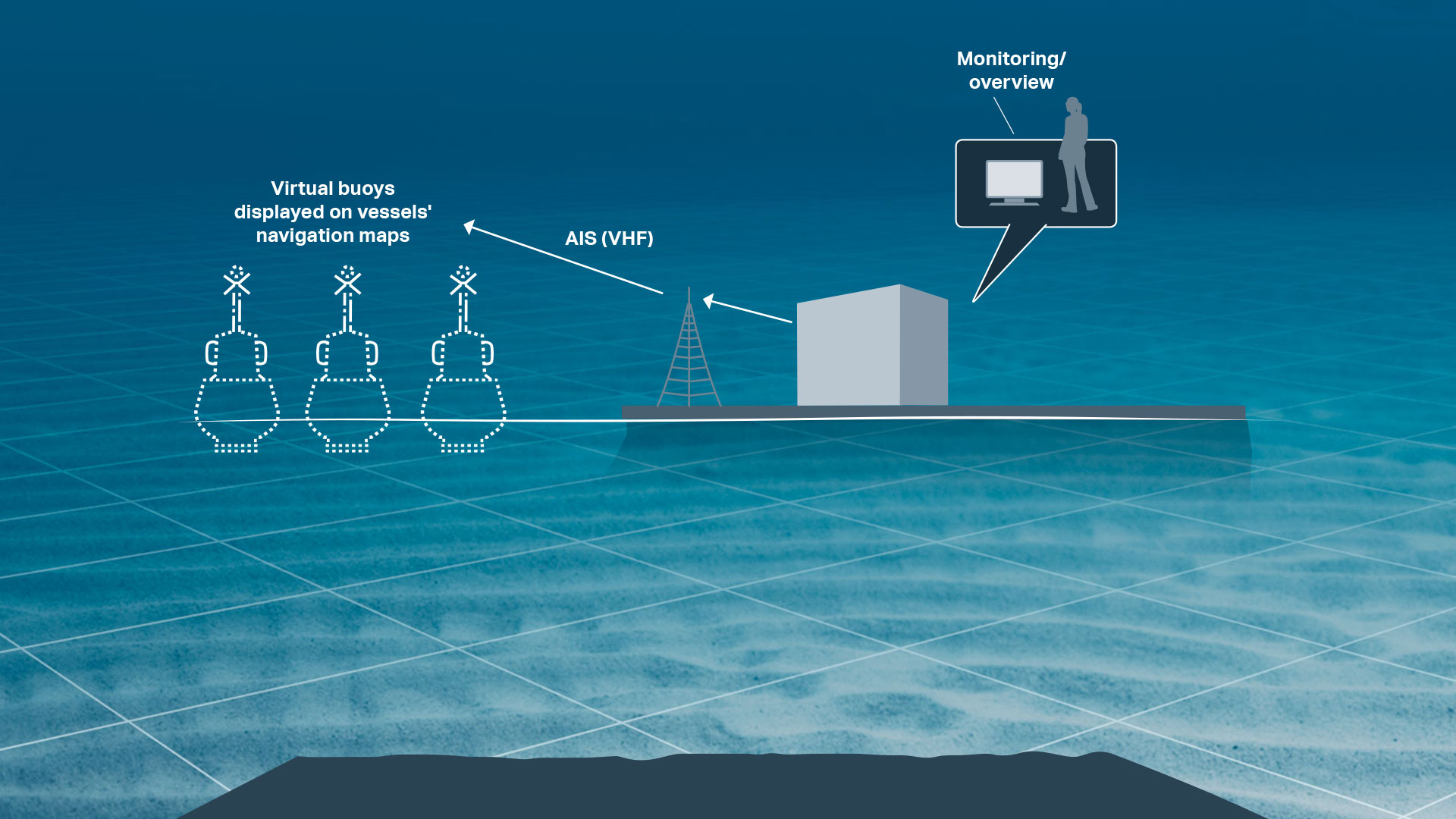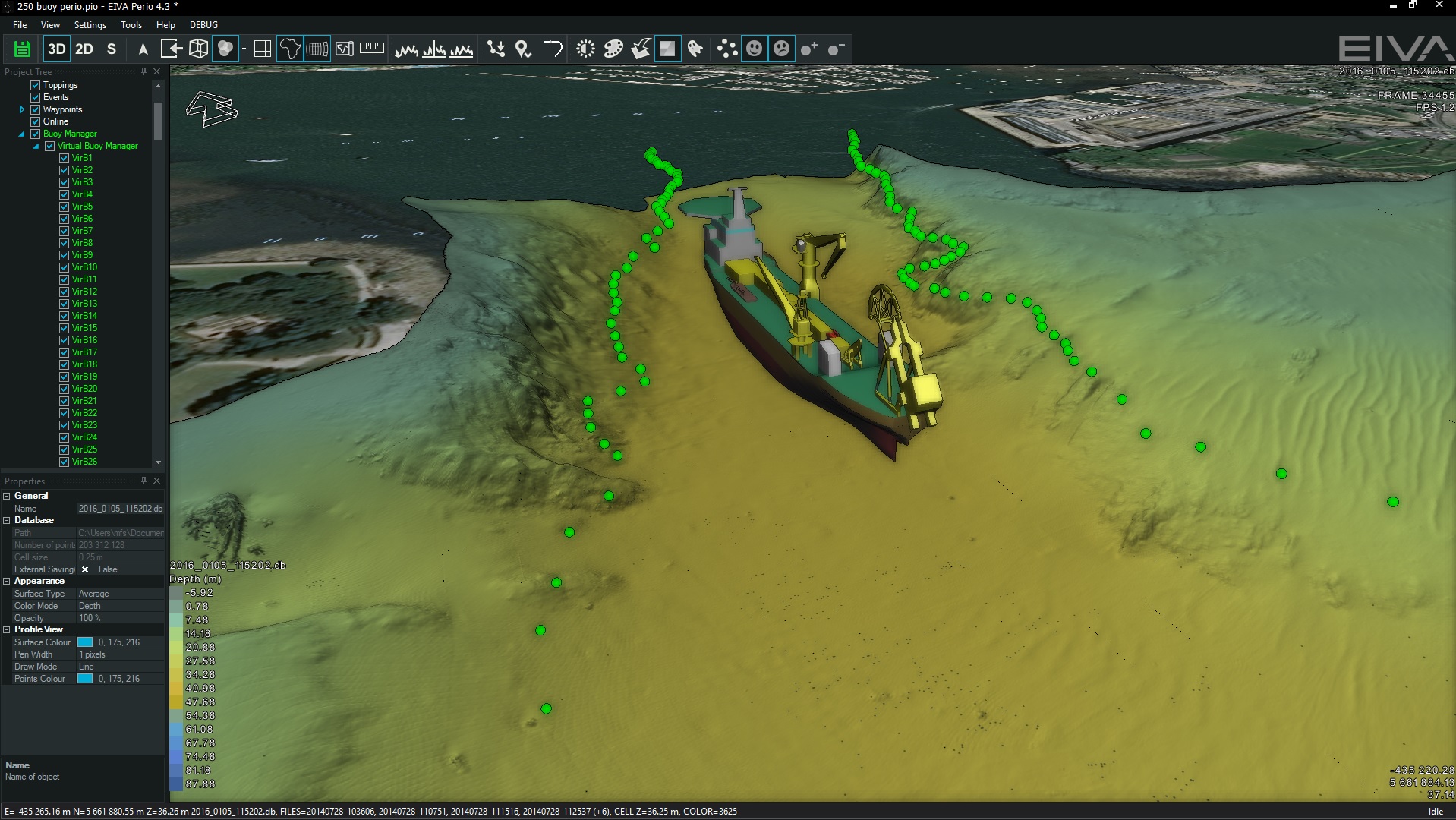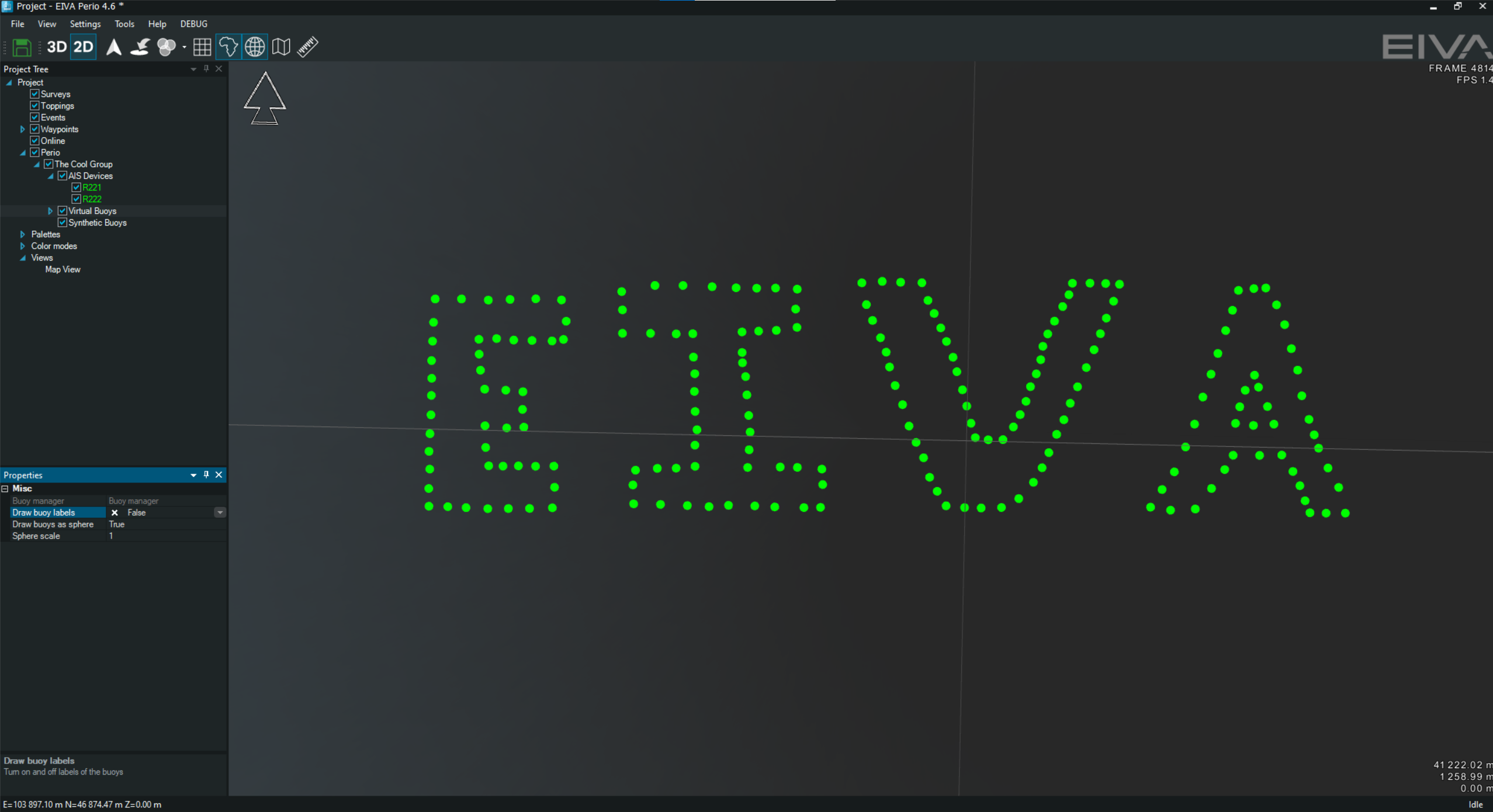
To use this site, please enable javascript

To use this site, please enable javascript
We recently updated NaviSuite Perio, our software solution for virtual navigational aiding.
In case you’re new to NaviSuite Perio: this software lets you deploy virtual buoys as aids to navigation (AtoN), which help ensure safe waterway navigation at a fraction of the cost of physical buoys. The virtual buoys are broadcast by AIS transceivers, and the signal is received by nearby vessels’ AIS devices which then display the virtual buoys in their navigation systems – just like physical buoys. Virtual buoys can for example be used to mark the deepest parts of a sailing channel for extra large vessels to follow, as well as marking areas to avoid, such as construction areas or subsea equipment.
The new version, NaviSuite Perio 4.6, makes virtual buoys easier to use than ever – for example by ensuring an uninterrupted signal, letting you import buoys from a .csv file, automatically defining AIS signal settings and expanding support for more AIS devices. Let’s dive into some of these new features...

An illustration of how NaviSuite Perio sends virtual buoys from your monitor to an AIS device and finally to nearby vessels’ navigation maps
Previously, if an AIS transceiver were to fail, this would mean that the virtual buoys being broadcast from it would of course fail to be broadcast to nearby vessels. However, in NaviSuite 4.6, the software makes sure that your virtual buoys will always be broadcast from an operational AIS transceiver, given one is available. If one AIS transceiver fails (or if you delete the connection to it from your software setup), NaviSuite Perio reacts by moving any buoys assigned to that AIS transceiver over to an operational one instead. Note that this requires a set up connected to two or more AIS transceiver.

The virtual buoys are seen in nearby vessels’ navigation systems as identical to physical buoys
When defining when and how often to broadcast your virtual buoys (AtoN) on AIS devices, in addition to following any rules defined by your local maritime authority, you must take into consideration the capabilities of your AIS transceiver, which for example cannot broadcast two different buoys in the same time slot.
NaviSuite Perio 4.6 can automatically calculate the optimal slot settings for your buoys – making sure the signal is sent out as often as possible while still following the AIS transceivers’ requirements. This means you can add, delete and change your virtual buoys without having to think about the slot settings, because the software does it for you.
With the ability to deploy up to 250 buoys per transmitter, that’s a lot of buoys you would otherwise need to keep track of the settings on!
To make it easier to save, share and upload buoy placements as needed, when needed, virtual buoys can now be imported from a .csv file. This also makes it faster to define a new set of buoys, as you can easily import information for any number of buoys, for example from an Excel sheet.

Recently, when testing NaviSuite Perio, our software team wrote out EIVA with 200 buoys – all operational as shown by the green colour of their display
NaviSuite Perio now supports more than two AIS devices (transceivers and receivers) simultaneously – in fact you can use any number of AIS devices in NaviSuite Perio 4.6 for transmitting and receiving AIS signals. The software differentiates between two types of AIS devices: transceivers and receivers, so it will naturally only assign buoys to be broadcast by devices which can transmit signals.